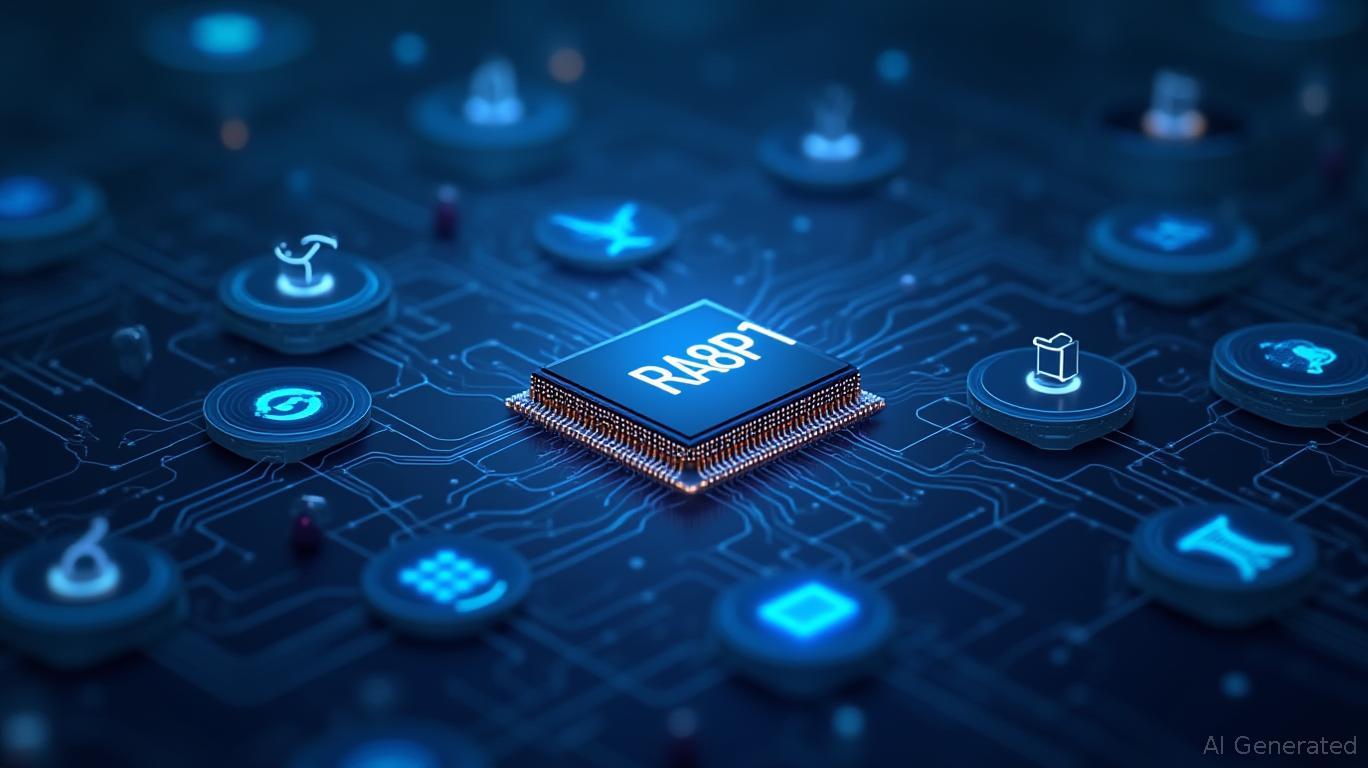Renesas RA8P1: A Game-Changer in AI-Driven Edge Computing
The global shift toward artificial intelligence (AI) and the Internet of Things (IoT) has created a voracious demand for chips capable of processing complex algorithms at the edge of networks—where data is generated, rather than in centralized cloud servers. This trend is being fueled by rising concerns over latency,
costs, and data privacy. Amid this, Renesas Electronics has unveiled the RA8P1 microcontroller, a device that promises to redefine the boundaries of edge computing with its groundbreaking architecture. Let's explore how this chip could catalyze a re-rating of Renesas' valuation and why investors should take note.
The RA8P1: A Technical Breakthrough
The RA8P1 is no ordinary microcontroller. At its core (literally) is a 1GHz Arm Cortex-M85 CPU, paired with a 256 GOPS Arm Ethos-U55 NPU—a combination that delivers up to 35x faster AI inference speeds compared to the CPU alone. This dual architecture enables real-time processing of advanced neural networks like DS-CNN and Tiny YOLO, making it ideal for applications such as facial recognition, predictive maintenance, and autonomous robotics.
Equally critical is its use of embedded MRAM (Magnetoresistive RAM)—a next-gen memory technology that offers 100x faster write speeds and 100,000x greater endurance than traditional flash storage. This eliminates a key bottleneck in edge AI systems, where frequent overwrites of model parameters or sensor data can degrade conventional storage over time. The RA8P1's 1MB/512KB MRAM, alongside 2MB of ECC-protected SRAM, ensures reliability even in harsh industrial environments.
Disrupting the AI Chip Shortage
The global shortage of semiconductors, exacerbated by supply chain bottlenecks and geopolitical tensions, has left industries scrambling for AI-optimized chips. Renesas' timing could not be better. The RA8P1 addresses two critical pain points:
- AI Compute at the Edge: By integrating an NPU directly into an MCU, Renesas reduces reliance on external GPUs or FPGAs, which are in short supply and expensive to deploy at scale. This makes the RA8P1 a cost-effective solution for mass-market IoT devices.
- Memory Innovation: MRAM's durability and speed mitigate shortages of flash memory, a component often subject to supply constraints. Renesas' partnership with for its 22nm ultra-low-leakage process also ensures stable manufacturing capacity.
Note: A rising stock price trend here would support the argument that investors are already pricing in the RA8P1's potential.
Edge Computing's Tipping Point
Edge AI adoption is accelerating, driven by 5G connectivity, industrial digitization, and consumer demand for smarter devices. Markets like smart cities, industrial automation, and healthcare are primed for disruption. For instance:
- Industrial IoT: The RA8P1's Gigabit Ethernet and TSN (Time-Sensitive Networking) capabilities enable real-time machine diagnostics and predictive maintenance.
- Consumer Electronics: Its 5-megapixel camera interface and WXGA display support position it for smart home devices, from AI-enabled security cameras to voice-controlled appliances.
- Medical Devices: The chip's secure boot and cryptographic engines make it suitable for patient monitoring systems requiring strict data integrity.
Renesas' ecosystem further amplifies the RA8P1's appeal. Tools like the RUHMI framework simplify AI model deployment, while partnerships with firms like Nota.AI (driver monitoring systems) and Irida Labs (traffic analytics) provide pre-vetted solutions. This “platform play” reduces development risk for customers, accelerating time-to-market and driving adoption.
Investment Implications: A Catalyst for Valuation Re-Rating
For investors, the RA8P1 represents a multi-pronged opportunity:
1. Revenue Growth: Edge AI markets are projected to grow at a CAGR of 25% through 2030, with industrial and consumer segments leading demand. The RA8P1's versatility positions Renesas to capture a significant share of this pie.
2. Margin Expansion: High-value chips like the RA8P1 typically carry 30-40% gross margins, well above the industry average. As adoption scales, these margins could lift Renesas' profitability.
3. Competitive Advantage: Few rivals offer a comparable combination of AI compute, memory innovation, and ecosystem support. Intel's Movidius chips and NVIDIA's Jetson modules target higher-end applications, leaving a gap in cost-sensitive, mass-market IoT—where Renesas is now strong.
Risks to Consider
- Supply Chain Reliance: While TSMC's 22nm process is mature, any disruption in foundry capacity could delay shipments.
- Competitor Responses: Chip giants like or may introduce rival MCUs, though they lack Renesas' deep embedded software expertise.
- Adoption Pace: Enterprises may delay edge AI investments if cloud costs remain low or regulatory hurdles arise.
Conclusion: A Strategic Buy for the AI Decade
The RA8P1 is more than a product—it's a strategic masterstroke. By addressing the twin challenges of compute power and memory scarcity, Renesas has positioned itself as a leader in the AI-embedded IoT revolution. With a robust ecosystem, strong partnerships, and a chip that outperforms its peers, the company is poised to capitalize on a multi-trillion-dollar opportunity. Investors seeking exposure to AI's next wave should consider Renesas Electronics (6723.T) as a core holding. The RA8P1 isn't just disruptive; it's foundational.

Comments
No comments yet